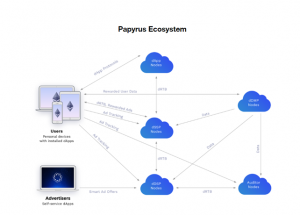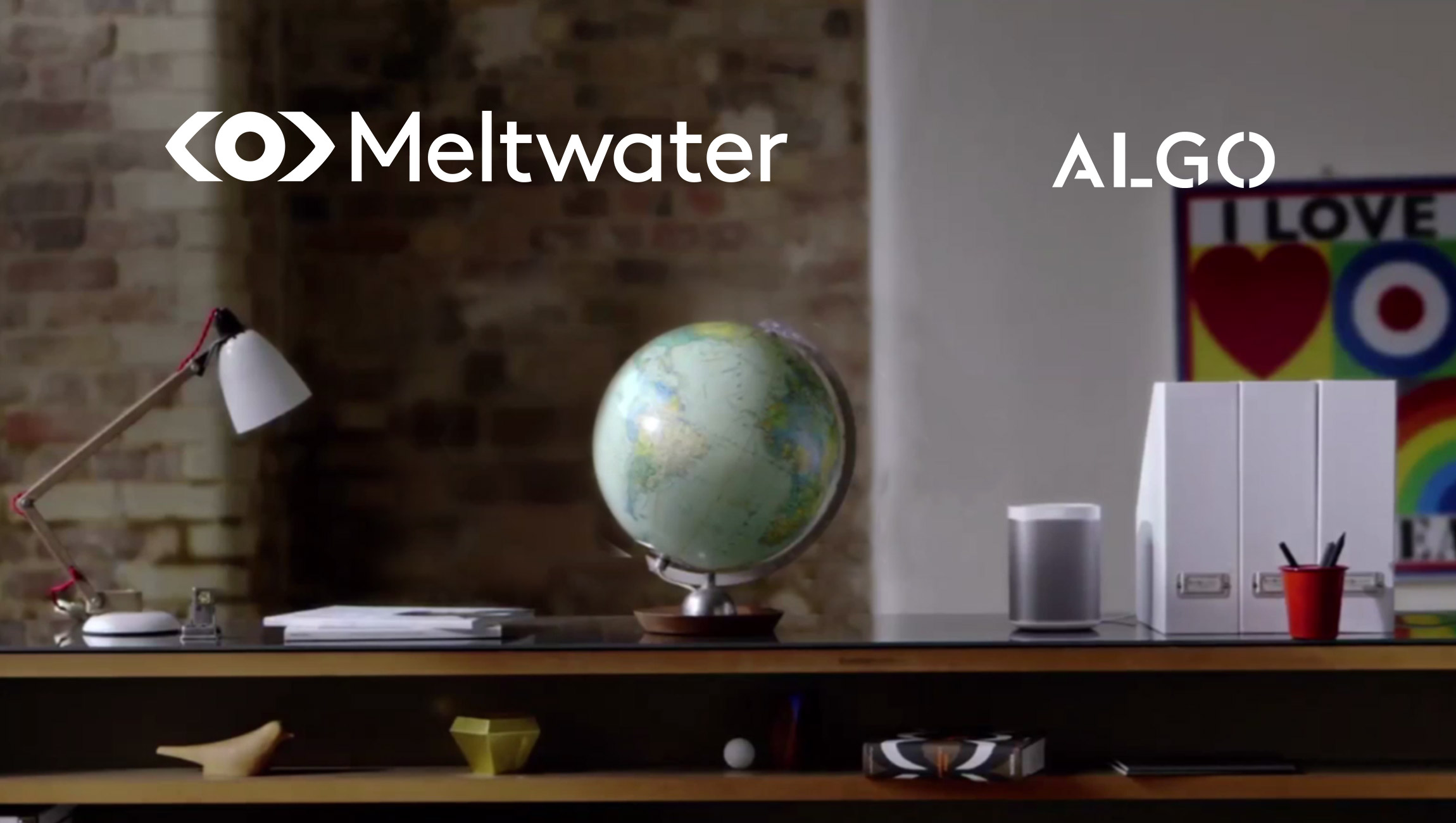The New Scalable Model for Transparency, Fraud Protection and Fair Play by Papyrus Will Optimize Digital Ad Spend and Save the Industry up to $110B Annually
Papyrus, a decentralized ecosystem for advertisers, publishers, developers, and users supported by Ethereum blockchain and smart contracts, announced its launch in the US. The project, funded so far by private investors for $1 million, was first conceptualized in January 2017 and aims to develop a revolutionary digital advertising platform using a constellation of integrated technologies that will transform and unite the entire digital advertising market in a single, comprehensive solution that offers unmatched transparency, security and cost effectiveness.
The Papyrus project is a decentralized ecosystem for advertisers, publishers, developers, and users, created on the basis of the Ethereum blockchain and smart contracts.
Papyrus Technology Evangelist Leonid Yeletskikh, said, “As the Ethereum blockchain model gains traction, developers are spawning new tools for the same old problems. Papyrus takes that a step further by developing architecture for an entirely new decentralized digital advertising ecosystem that effectively prevents ad fraud with expedited verification processes to improve real-time bidding. The Papyrus model gives autonomy to all participants, including beleaguered netizens who have up to now only exercised control with adblock technology to ward off unwanted ads,” Yeletskikh added.
A New Vision for AdTech

Papyrus will deliver the world’s first decentralized, scalable ecosystem for programmatic-advertising capable of processing billions of targeted advertisements daily. This system will bring together users, publishers, advertisers and developers of decentralized applications (dApps) in a new way that permits them to interact in an efficient, transparent and mutually beneficial environment that has built-in fraud prevention, and which offers an unprecedented level of control, even for users.
The current digital advertising market is plagued by the absence of transparency and ad fraud. Moreover, despite the availability of predictive technology, targeted advertising using current technology has very low accuracy.
The result is up to 50 percent of advertising budgets derailed to pay intermediaries or simply wasted on fraudulent traffic – for every $1 spent, advertisers receive only $0.5 in value. As the 2017 global market for digital advertising reaches a value of over $223 billion, this could mean up to $110 billion of misused ad spend by the end of the year.
The uniqueness of the Papyrus approach lies in the “trustless” environment powered by blockchain technology.
Using blockchain, participants rely on decentralized consensus and universal transparency and incentives for fair and efficient cooperation within the ecosystem.
Papyrus Identified the Reasons Behind the Growth of AdBlock Programs
Papyrus emerged in response to the overwhelming negative user experience with irrelevant, irritating and fraudulent digital advertising. Hidden surveillance of user behavior and data exploitation has prompted the growth of adblock programs, which further reduce efficiency.
In addition, the long, inefficient and opaque chains of intermediaries between advertisers and publishers bleeds advertisers of revenue, increases costs for fraud prevention and impede their ability to accurately calculate true costs.
To accelerate the adoption of the ecosystem by the market, Papyrus will provide special open source libraries that can easily be embedded within traditional digital advertising systems. These libraries will be available at a very low cost barrier, creating no direct threat to existing business models.
Blockchain Goes Mainstream in a Big Way
Unlike other advertising blockchain projects, including BasicAttentionToken, Adchain, QChain, AdEx, and others that address single, highly specialized problems, Papyrus is a full-service solution that seeks to strategically transform the entire digital advertising landscape. The adoption of blockchain technologies in advertising has until now been associated with scalability issues.
Papyrus is both scalable and built with open architecture that will accommodate the integration of other projects within the Papyrus ecosystem. This creates a truly global, decentralized platform open to all developers of new adtech solutions for continuous improvement and evolution.
How does RTB Breed Transparency-Related Issues, Allowing Fraud to Continue?
While real-time bidding technology (RTB) for ad buying has already overcome peak expectations, it has plateaued in terms of productivity. RTB has transparency-related issues, allowing fraud to continue and forcing users to turn to Adblock technology to protect against irrelevant content and gratuitous exploitation of their attention.
Papyrus uses state channels and other blockchain technologies to prevent these weaknesses of traditional advertising while reinforcing the speed and efficiency of RTB.
Papyrus Product Director Alexander Shvets, said, “Papyrus is a breath of fresh air in the world of real-time bidding. Blockchain is game-changing tech that will not only solve the industry’s transparency and fraud problems, but unleash a new era of advertising creativity. The Papyrus mission is to use the best of blockchain tech to reinvent the RTB ecosystem from the ground up.”
This leads to Shvets’ vision for the future of digital advertising, “Papyrus solves the problems of digital advertising by simply scrapping the whole thing, instead of trying to fix it. It is far more user-centric than any previous system, offering full involvement of all ad cycle participants, from publishers and application owners to advertisers and end users.”
Technology for the Future
The Papyrus decentralized digital ad ecosystem is built on top of the Ethereum blockchain and its smart contracts, utilizing a network of state channels for bandwidth scalability and a reliable decentralized data storage structure. This enables Papyrus to minimize storage costs and maximize speed for handling large amounts of data.
Papyrus consists of four layers of architecture with the components of each layer developed as open source software. It will also employ blockchain-based identification and reputation management tools for ecosystem participants, as well as a decentralized real-time-bidding (RTB) protocol that will support dApps and instantaneous transactions. This framework combines decentralization, capacity, and speed.
Total Volume of PPR Utility Tokens Fix
Publishers, dApp developers, advertisers and end users will use Papyrus Ethereum-based tokens, called PPR, as a utility token for exchange within the ecosystem. The total volume of PPR utility tokens in the ecosystem will be fixed at the volume of 1 billion.
With the launch of Papyrus, circulating PPR tokens will be application ready for trade on crypto exchanges outside the Papyrus ecosystem, allowing conversion of tokens to fiat liquidity on secondary markets.
After launching an initial prototype of the ecosystem, followed by a limited pre-sale of tokens scheduled for September-October 2017, Papyrus will start integration with traditional advertising networks and platforms.
Read Also: It’s 2017 and you still don’t know where your ads are running











